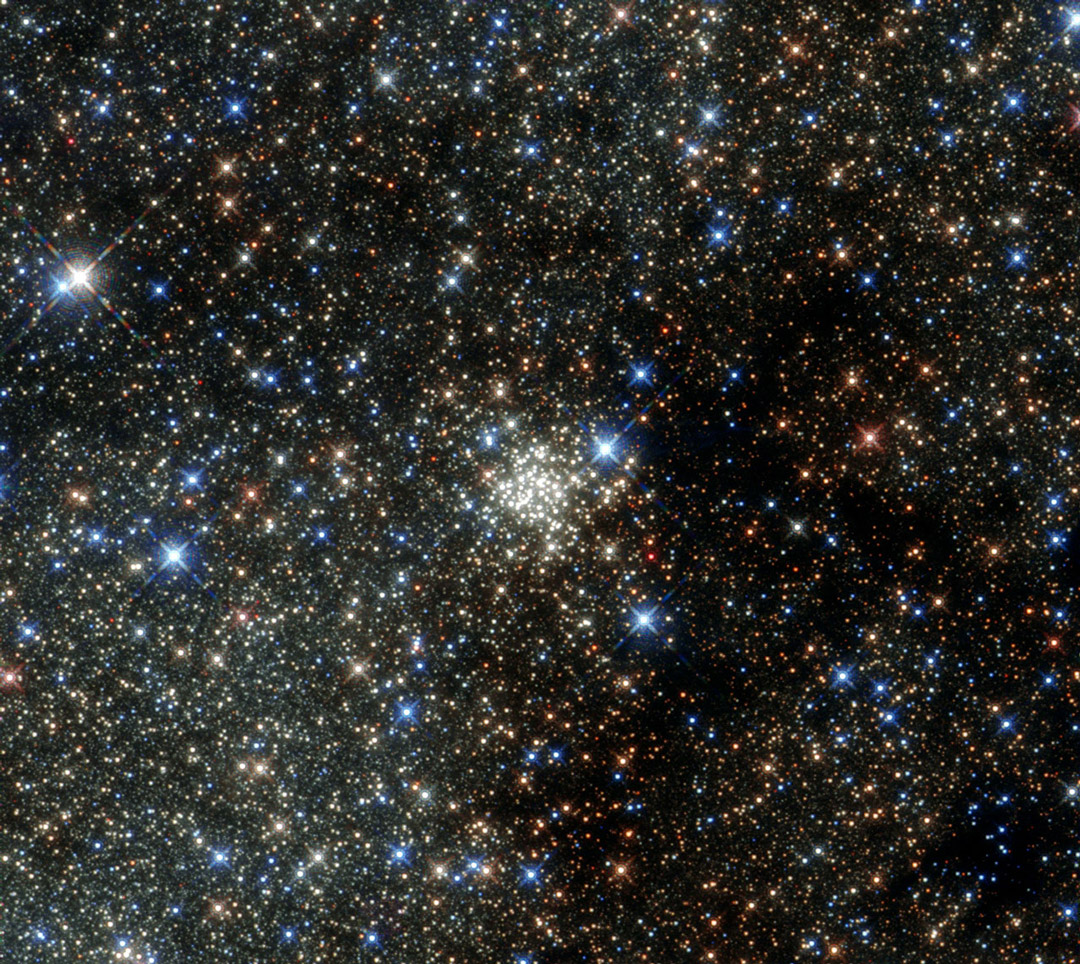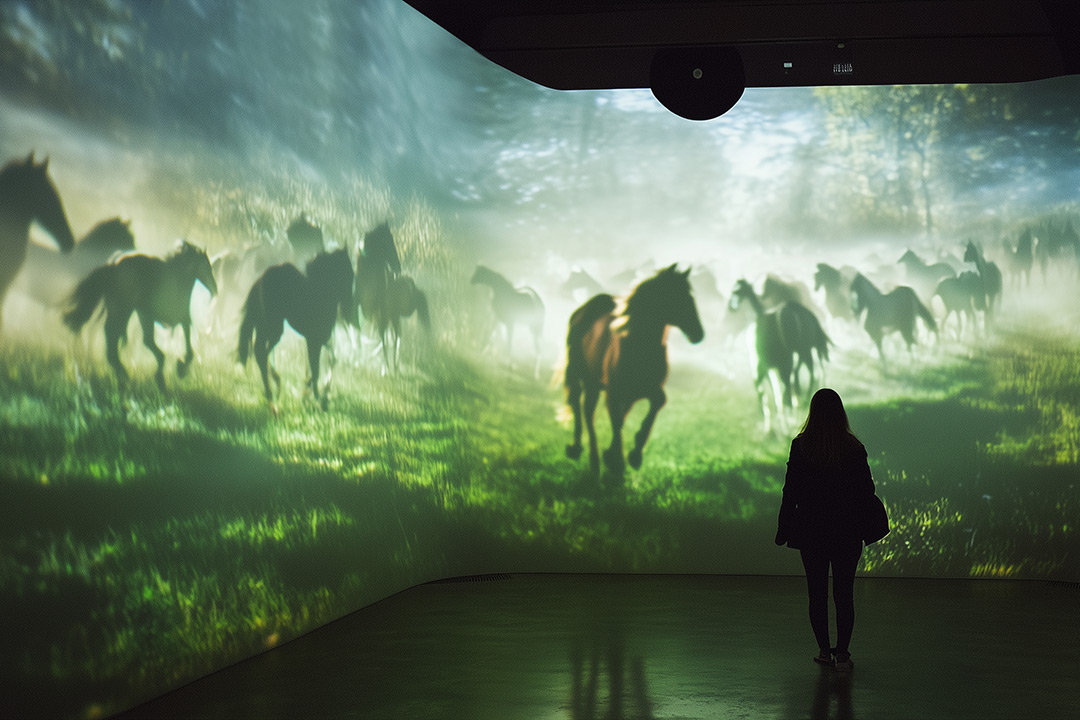Astronomers will continue to unlock some of the universe’s mysteries as part of nine JWST Cycle 4 programs

NASA/ESA/CSA/Steve Finkelstein
This JWST image for the CEERS survey is filled with galaxies. Astronomers are discovering more about these galaxies, black holes, and other objects in the universe through the advanced technologies of JWST, which begins Cycle 4 in July.
Numerous members of the RIT community will participate in exploring the universe during the James Webb Space Telescope’s (JWST) fourth cycle, set to begin in early July.
Researchers will be co-investigators on nine different accepted proposals, including the largest of Cycle 4. Director for the Laboratory for Multiwavelength Astrophysics Jeyhan Kartaltepe will work on eight programs while Director of the Center for Detectors Don Figer will continue to advance knowledge of the Arches cluster, which he helped discover. Additionally, Postdoctoral Research Associates Santosh Harish and Lilan Yang and Ph.D. student Edwin Alexani will also be involved in JWST Cycle 4 work. Rebecca Larson, who was a postdoctoral research associate with Kartaltepe until recently moving on to the Space Telescope Science Institute, is also included on numerous accepted proposals.
“I think the biggest thing to look forward to is a lot of spectroscopy,” said Kartaltepe. “We’ll be getting spectra of high redshift galaxies that we first identified in COSMOS-Web, so it will be exciting to spectroscopically confirm some of them. Another program will focus on ‘little red dots,’ or the high redshift AGN candidates that we’re still trying to understand.”
The JWST Cycle 4 programs that include RIT researchers are:
- Vast exploration for nascent, unexplored sources (VENUS): The largest Cycle 4 proposal accepted, this treasury program will observe apparently bright but intrinsically faint distant objects using gravitational lensing to further explore the first galaxies, black holes, and their evolution. (Kartaltepe, Larson)
- Understanding the nature of the first wandering AGN candidate in a clump: This program will take a look at active galactic nuclei (AGN), which will open new avenues for chasing distant wandering supermassive black holes and advance understanding of their connection with galaxy mergers and clump formation. (Kartaltepe, Harish)
- SPAM: Star-formation from photometry through the addition of medium-bands: This work will add 10 new filters to the CEERS legacy dataset. (Kartaltepe, Larson)
- Brightest & farthest: Confirming intrinsically luminous z~10-12 galaxies in COSMOS: This proposal aims to spectroscopically confirm 30 of the brightest, highest redshift galaxies. (Kartaltepe, Harish)
- A comprehensive population study of little red dots: Connecting early BH and galaxy growth: JWST has previously revealed an unknown population of dust-reddened active galactic nuclei in the early universe. This work will follow-up to measure and discover more. (Kartaltepe, Harish, Yang)
- MEGA spectra: Black hole growth and ISM conditions at cosmic noon: This work will create a complete census of the interstellar medium star formation and black hole growth within a targeted area. (Kartaltepe)
- A new window on galaxy structure: Mid-IR morphology with MEGA: No study has directly examined the morphology of the dustiest galaxies at cosmic noon. This program will describe how dust and star morphology evolves with cosmic time and varies with physical properties. It will also examine how AGN growth correlates with merger signatures in faint and obscured populations, and will shed light on how and where star formation is quenched. (Kartaltepe)
- A census of galaxy kinematics and outflows to z~7: The goal of this program is to reveal the spatially resolved kinematics of galaxies in the early universe in large numbers for the first time and to detect and characterize the physical and chemical conditions of their outflowing gas. (Kartaltepe)
- Dissecting the Arches cluster: An ideal test bed to study the metal-rich universe: For the first time, a detailed census and characterization of the heavily reddened massive cohort of the Arches cluster will be taken. This will make the cluster the prototypical template for understanding clusters and their environments in distant, metal-rich, massive star-forming galaxies, including those seen in JWST images of young galaxies in the early universe. (Figer, Alexani)

NASA
The Arches cluster is the densest known star cluster in the Milky Way, shown here in a Hubble Telescope image from 2015.
The Arches cluster was co-discovered by Figer in the early 1990s as part of his Ph.D. thesis research. As Figer explained, the discovery of at least 150 massive stars in the young cluster was a game-changer because astronomers thought supermassive clusters only existed in the early epoch of the galaxy. In his follow-up research of the cluster using the Hubble Space Telescope, he identified the only known measurement of an upper mass cutoff. Now, JWST provides the ability to get even more detail.
“We have a chance to observe fainter stars, and now we have an opportunity to go back and get better mass estimates,” said Figer.
Figer has been involved in JWST since its development. As a detector scientist, he led his team to produce results that NASA used to choose detector technology in both the imager and spectrograph on the telescope, resulting in a NASA Space Act award for the work.
As JWST has already proved through its first three cycles, its advanced technology is allowing for the best views ever of the universe and more information than ever before.
“We see starburst galaxies all around us where we know there’s a lot of new stars being formed, but they are far away so we can’t observe individual stars,” said Alexani. “The fact that our cluster is very metal rich, very young, and in our own galaxy will provide us with a lot of spectroscopic data and we will be able to see individual stars and study them.”
JWST Cycle 4 will have the largest general observer time so far, with 274 proposals selected for approximately 8,500 total hours of observations. 2,377 proposals were submitted for consideration, requesting more than 750,000 hours. The cycle’s investigations will cover a wide array of study as astronomers around the world work to uncover more mysteries of the universe.









